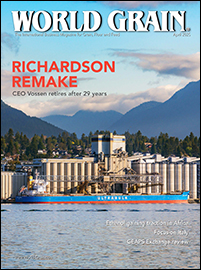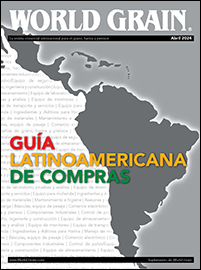Morocco relies on its extremely diverse agriculture and food system as the backbone of the economy. Traditionally, Morocco’s agriculture consisted of small-scale, low-resource, subsistence grain farms or semi-nomadic sheep grazing.
In recent decades, modernization and liberalization efforts resulted in intensive, high-yielding, market-orientated and mechanized commercial operations for many products. Officials say the country has reached "satisfactory levels" of food self-sufficiency, at 80% for cereals, 60% for sugar, 35% for edible oil, 100% for meat and 85% for milk and dairy products. In fruit, vegetable and fish product areas, Morocco has surpassed self-sufficiency and is a net exporter.
Since the early 1960s, successive agricultural development plans have identified three main objectives: ensuring food security, promoting rural development to curb rural exodus and promoting agricultural product exports. Obtaining these objectives has focused on capturing the country’s surface water resources for use in irrigated agriculture, and enormous capital resources have been invested in dams and other infrastructure to control surface water flows.
In addition to boosting food production, irrigation development has also increased rural employment, promoted agro-industry and helped stabilize domestic production. It has also raised productivity and incomes significantly by bringing modern agriculture to small farm families.
As Morocco nears the end of the infrastructure phase of its national development plan, emphasis is beginning to shift to the more difficult task of ensuring efficient allocation of the existing water resources among competing consumer groups on a sustainable basis. Increasing water resource development costs, along with financial constraints and competition for public funds, has fostered a substantial change in attitudes to water conservation.
Serious thought has been directed towards efficient water use in the irrigation sector while recognizing its strategic role in the economic and social development of the country. Indeed, the irrigation subsector currently represents only 10% of arable land but contributes 45% of added-value agriculture and produces 75% of the agricultural exports.
At a recent international forum on agriculture, Ismail Alaoui, Morocco’s minister of agriculture and rural development, explained the country’s agriculture policy in light of the need to adapt to trade globalization and to honor commitments related to its agreements with the European Union and the World Trade Organization. While still trying to guarantee food self-sufficiency and improve farm income, efforts are being made to integrate agriculture in the global economy, protect the environment, preserve production potential and maintain the safety and phytosanitary quality of Morocco’s products.
Alaoui said these efforts were focusing on management of natural resources, development of farming enterprises, restructuring farm debt and improving rural living conditions. He said to succeed in these efforts to guarantee food security, Morocco would continue to need regional and international financial and technological assistance and larger access to markets.
Despite Morocco’s successes with irrigation, its agriculture is always vulnerable to drought. In the period of 1999 to 2001, in particular, severe drought conditions persisted, draining reservoirs and drastically slashing agricultural output.
In response, the government created an emergency US$65 million program to employ farmers in public works projects in exchange for financial aid. The farmers’ aid program was a joint effort by the ministries of interior, public works, energy, education and health.
"We want farmers to be able to live on their farms, despite this crisis," Alaoui said at the time. "The money is intended to serve their immediate needs of poverty."
WHEAT AND FLOUR MILLING
Prices for most crops are determined freely by the market, but the government offers minimum price guarantees for some essential crops, including wheat, barley and durum.
The minimum price for bread wheat is 2,500 dirhams (dh) per tonne, or about US$236 at recent exchange rates. Farmers may sell to the private sector at market prices, or they may sell at the minimum price offered by the government Office National Interprofessionnel des Cereales et des Legumineuses (ONICL).
The government also continues to subsidize annually about 1 million tonnes of 80% extraction flour, known as "Farine Nationale," to make bread flour available to the low-income population. This subsidized wheat typically accounts for about 45% of annual flour output of about 2.4 million tonnes.
ONICL buys wheat for Farine Nationale either on the domestic market or via a wheat importer. The ex-mill price for the subsidized flour this season is 1,820 dh per tonne.
Except for bread wheat imports, about one-fourth of which continues to be procured by ONICL, imports of other cereals such as durum, barley and maize typically have been handled entirely by the private sector. But last year, exceptionally, three-quarters of the barley imported by Morocco was purchased through the ONICL to ensure adequate supply because of the drought.
Some Moroccan flour mills continue to import wheat, mill it and re-export it, mostly to African countries. Wheat imports under this customs regime (Temporary Admission or TA) totaled 135,000 tonnes during 2000-2001.
For 2001-02, indications were that the amount imported under the TA would increase to as much as 220,000 tonnes. The increase was expected as mills sought to improve capacity utilization.
Wheat imported under the TA is under strict control of Moroccan customs to ensure that it does not go into the local market. This wheat is not subject to customs duties.
Morocco continues to apply a variable duty for other bread wheat and durum imports. The system includes a flat customs duty (ad valorem) and an additional duty.
The additional duty applies when the declared price is lower than the government’s preset threshold price. The additional duty then is applied to the difference between the declared price and the threshold price.
For bread wheat, the ad valorem rate is 33.5%, with a threshold price of 2,000 dh and an additional duty of 103.5%. The ad valorem rate for durum is 21%, with a threshold price of 2,700 dh and an additional duty of 93%.
Farine Nationale accounts for as much as 50% of Morocco’s annual flour output. In 1996, total Moroccan flour production was 2 million tonnes, including 950,000 tonnes of subsidized flour, from a total wheat grind of about 2.65 million tonnes.
Morocco has about 80 large industrial mills with a capacity of about 3 million tonnes of wheat. Most are concentrated in urban areas such as Casablanca, Rabat and Fes.
FEED INDUSTRY
Morocco’s total mixed feed production reached an estimated 1.4 million tonnes in 2001, up substantially from the 980,000 tonnes estimated in 1996. About 20% of total production is mixed on farms to avoid paying value-added taxes on mixed feed, as feed ingredients are not subject to the VAT.
Nearly 95% of Moroccan mixed feed production is for poultry and depends heavily on oilseed meal as a source of protein. Because Morocco’s oilseed production consists solely of a relatively small sunflower crop (30,000 tonnes annually), soybeans and/or meal is imported.
In November 2000, the government changed its import duty regime for oilseeds and products. At that time, the government increased duties on imported soybean meal to 25% and increased duties on oilseeds not imported by crushers to 22.5%, while cutting duties on oilseeds imported by crushers to 2.5%.
Morocco until recently had only one major crusher, Lesieur, located in Casablanca with a capacity of 1,200 tonnes day. Feed millers often had difficulties negotiating prices with the Lesieur monopoly and on several occasions protested about the poor quality of the locally produced soybean meal.
Last year, Moroccan feed millers even boycotted Lesieur for several weeks, willing to pay more for imported soybean meal in an effort to force the company to cut its prices and improve quality.
Feed millers are still lobbying the government to cut down the duties on imported meal and on oilseeds that are not directly imported by the crusher. But observers think it is unlikely that the government will be willing to endanger its local crushing industry by lowering the duties significantly.
But help for the millers may be at hand, as a second crushing mill has been built by a private entrepreneur near the inland city of Meknes. The company focuses primarily on olive processing and oil extraction, but the facility includes an oilseed crushing operation with an estimated capacity of 600 tonnes a day.
The new mill is expected to take advantage of its location in the middle of the major olive and sunflower growing areas in Morocco to supply competitively priced protein meals and edible oil. Also, the new mill, as a crusher, will benefit from the preferential customs duties on oilseeds imports.
The new mill could encourage Lesieur to improve quality and cut down its prices. Observers have noted that cheaper, more efficient feed could help bring down poultry meat prices, which in turn could boost stagnant consumption.
___11503___



